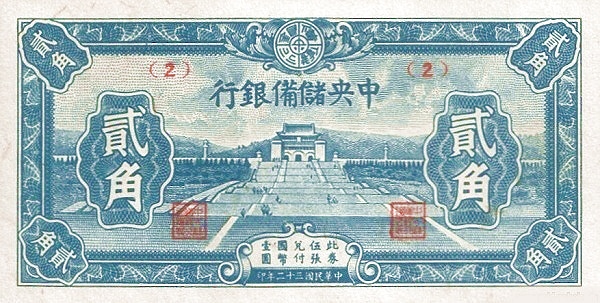In this article, recent MSc graduate Cindy Wan explores Japan’s colonial legacy in Korea through the development of Korea’s business sector, which Japan helped develop by introducing modern business and monetary institutions. Wan shows that stark discrepancies in firm formation and finance between Korean and Japanese enterprise meant that, under Japanese rule, Korea’s business sector did develop, but mostly to the benefit of Japanese enterprise.
Cases of colonial rule provide economic historians with a before-and-after to see the effects of institutions in new contexts. Through case studies of colonialism, we can explore the economic effects of colonization: how the colonized country changed, and who won and who lost during that change.
What effect did Japan’s colonization of Korea have on Korea’s development of its business sector? From 1910 to 1945 the Japanese empire ruled over Korea. During their rule, the Japanese colonialists introduced legal institutions that promoted the formation of firms in Korea, and monetary institutions which put the Korean yen on the gold standard and grew financial capital markets. Firm formation and the size of Korea’s financial sector did then grow. But once analysed by nationality, it becomes clear that Korea’s business sector grew mostly to the benefit of Japanese enterprise.
New legal institutions made it easier for firms in Korea to form. Just prior to annexation, in 1910 Japan passed a series of Imperial Ordinances to regulate applications for incorporation. These ordinances supplied the legal procedures for setting up a company in Korea. The ordinances also supplied industrial property rights protections.
Then after annexation the colonial government adopted Japan’s Civil Code and Commercial Code. The Civil Code brought the legal regime in Korea in step with Japan’s. The Japanese Commercial Code provided foreign entrepreneurs with a regulatory environment of international standard to start businesses in Korea. It was substantially influenced by the General German Commercial Code (ADHGB), one of the most modern commercial codes in the world at the time.
Korea’s business sector developed quickly after the introduction of those institutions. Throughout the Japanese colonial period the number of new companies increased eleven-fold between 1918 in 1940.
Most of the new firms, however, were Japanese. From 1911 to 1929 the number of Japanese-owned joint-stock companies increased from 58 to 470; the number Korean-owned joint-stock companies increased from 19 to 207. Though Korean companies’ rate of change was greater, Japanese companies outnumbered them 2.27 to 1 by 1929.

(Source: Government-General. The Statistical Yearbooks of the Government-General, 1911-1929.)
While in firm formation Korean enterprise may have kept pace with Japanese enterprise, it was left far behind in investment. Annual measures of total paid-in capital between Japanese and Korean firms show by how much more Japanese enterprise benefitted from the emerging business sector in Korea (Figure 1).
Korean firms lagged well behind in total paid-in capital, both in absolute terms and the rate of growth. From 1911 to 1927 the total paid-in capital of Japanese firms increased from about 3.5m Korean yen to 164.5m. For Korean firms, total paid-in capital rose from 2.1m to 16m. Japanese companies’ paid-in capital increased 4,600%. Korean companies’ capital increased 661%, only 14.37% of the Japanese companies’ total growth.
Political support by the home government encouraged investment in Japanese firms. Over thirty Japanese conglomerates expanded their businesses in Korea during the colonial period. The Japanese government looked to these conglomerates for help in developing heavy and chemical industries for the military use and foreign trade. In return, the government provided subsidies and allowed the conglomerates to exercise monopoly power in the colony. The conglomerates accounted for as much as 74% of total capital invested in Korean industries in 1942, while all domestic Korean companies together took up merely 8% of total investments in the same year.
Monetary institutions
Japan also brought new monetary institutions that made investment in enterprise easier. Before annexation in 1905, the Japanese protectorate government decided to issue central bank notes and new coins based on the gold standard. Then after annexation in 1910 the Japanese government established a central bank (Bank of Korea) and development banks. Korea and Japan were integrated monetarily once the Bank of Korea secured unconditional convertibility of its banknote into the Bank of Japan note.
After integration, development banks were formed in several Korean cities to promote industrial development. These development banks became the biggest formal financial institutions in Korea. With a de facto gold standard, via convertibility of the Korean note with the Japanese note, and the creation of development banks, Korea’s financial sector was primed to expand just at the time new institutions made it easier to form firms.
Bank credit and company savings were the main sources of capital. With the development of the banking system, the total amount of bank credit outstanding increased significantly during the colonial period. Total bank credits increased from 16.2m yen in 1908 to 1,053.3m yen in 1938, rising by an astonishing 65 times in this 30-year period (see Table 1).

(Source: Government General. The Economic Yearbook of Chōsen, 1908-1938)
However, the percentage of credit that was allocated to Korean-owned businesses was smaller than the credit issued to the Japanese. Between 1908 and 1938, Korean firms’ share of bank credit accounted for around 20% to 37% of all bank credit in Korea, while the Japanese share ranged from 35% to 77%. Considering that the Japanese population in Korea only accounted for about 3% of the total population, this indicates that Korean banks primarily served Japanese citizens in Korea, rather than Koreans.
Korea’s business sector under Japanese rule shows how aggregate and distributional observations can tell two different stories. Even if Korean entrepreneurs stood to benefit from the institutional development promoted by the colonial government, many of them could hardly take part in the core of industrial development.




